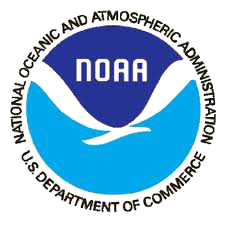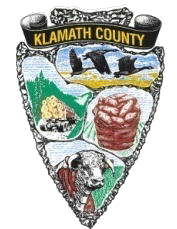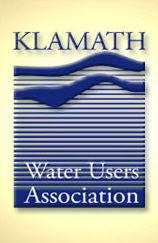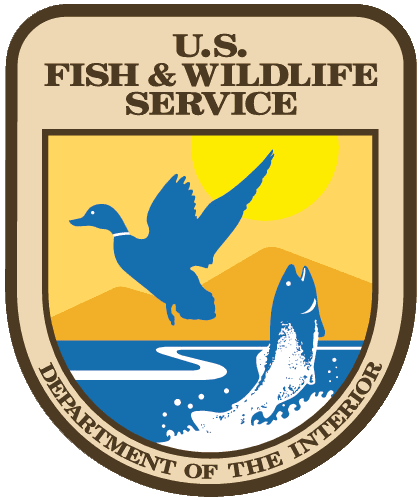Grant Application Statement of Work
Task 1. Modify Klamath Basin DSS for Use as a Project Communication Tool
The purpose of this task is to modify the existing Klamath Basin Decision Support System (www. klamathdss.org) to serve as a communications and product dissemination tool for this research. Three new web pages describing the research project, the purpose and goals, the participants and the planned benefits and outcomes will be developed and deployed on the website. This task includes the implementation of web tracking software to quantify the amount of web traffic as a measure of the level of interest and a location for making available products. Recognition of the NOAA Climate Program and the SARP Program will be prominently displayed.
Task 2. Organize, Conduct and Document the Klamath Basin Water Supply and Drought Summit
The purpose of the initial Summit is to assemble the diverse Stakeholder groups to introduce them to the research project, confirm their roles and responsibilities, discuss the goals, objectives and benefits of the research and establish a common understanding of the current water supply forecast information for use in water supply and drought risk management decision making. The Summit will include formal presentations by representatives from the NWS-CNRFS and the NRCS-NWCC about the current status of water supply forecasting within the Klamath Basin, the operational setting and constraints associated with issuing the forecast, the sources and relative magnitude of forecast uncertainty, and their recent efforts to improve forecast accuracy. Completing the Summit will ensure a common base of knowledge prior to the Focus Group Meetings. Results from the Summit will be published in formal Proceedings as a research deliverable.
The Statement of Work consists of the completion of seven (7) tasks. Many of these tasks are associated with working with the Stakeholder Groups to identify how the water supply forecast information is used in making decisions about availability and drought risk and ultimately developing concept products which can be implemented in the future by the NWS-CNRFC and the NRCS-NWCC.
Task 3. Organize, Complete and Document the Focus Group Meetings
Once a common knowledge base is established, stakeholder focus group meetings will be used as the forum and process to accomplish research objectives one through four. These objectives are:
- Understanding how the currently available water supply forecast information is used by the diverse Stakeholder community within the Klamath Basin. When during the year are decision made? What are these decisions? What are the temporal and spatial scales of the decisions? What is the magnitude and implications of these decisions?
- The risk tolerance of individual Stakeholders groups relative to the forecast uncertainty. Can a risk threshold expressed as forecast uncertainty for the specific decisions made by each Stakeholder group be established? What alternative decisions are made based on forecast uncertainty? What is the minimum forecast skill that provides useful information? How can users learn to work with the forecast uncertainty presented to them?
- Improved means of and products for communicating risk and uncertainty associated with the use of the Klamath Basin water supply targeted at specific Stakeholder groups and their risk tolerance. Can improved communication products, based upon the NRCS-NWCC seasonal water supply forecast and the NWS-CNRFC ensemble streamflow prediction forecasts be developed? To what extent are these products transferable to other western U.S. basins facing similar water resource issues.
- Improve the understanding within NOAA, the NWS and the NRCS among scientists and science managers of the stakeholder requirements for communicating water supply and drought risk, including an improved understanding of the adaptive decisions which are made by a broad stakeholder community.
The Klamath Basin Stakeholders will be organized into a maximum of eight Focus Groups (see Anticipated Research Benefits section for the Stakeholders). Stakeholders with similar decision responsibility will be placed in the same group.
A web meeting will be conducted with each Stakeholder Group prior to the actual Focus Group meeting. Materials describing the Research Team’s preliminary understanding of how the Group uses the currently available water supply forecast information, the types of decisions made by the Group, the temporal and spatial scales of the decisions and the magnitude of the decisions will be developed and summarized during the web meeting, to ensure productive Focus Group face-to-face meetings. The preliminary materials will be discussed during the web meeting and refined for use in the face-to-face Focus Group Meetings.
Expectations are that during a two week period, eight (8) focus group meetings will be completed. The purpose of these meetings is to add detail to preliminary information obtained during the web meeting. Four focus meetings each week are envisioned.
The results from the Focus Group meetings will be summarized in a final report. Results will also be posted to the project website on the Klamath Basin DSS.
Task 4. Develop Stakeholder Specific Products for Communicating Water Supply / Drought Risk
The results from the Focus Group Meetings will be used by the Research Team to develop up to one concept product for each Stakeholder Group. Each concept product will be specific to the needs of a Stakeholder Group. A written description of the function / use, technology requirements, consistency with the missions of the NWS and NRCSS, probable implementation priority and cost will also be developed for each concept. Comments on each concept product will be solicited from each Stakeholder Group through the completion of a web meeting and the input used to modify or refine the concept products. The results from this task will be summarized in a final report. This final report is expected to serve as a guidebook to the NWS and NRCSS for potential future product development and implementation. Close coordination among the Research Technical Team will occur during this task to ensure concept products are consistent with the operational forecast environments of the NWS-CNRFC and the NRCS-NWCC.
Task 5. Complete a Final Summit Meeting
To ensure a common understanding of the perspective of each Stakeholder Group and promote the transfer of knowledge, tools and information among all Stakeholders, a final Summit will be convened. This Summit will focus on presenting the results from the individual Focus Groups and the concept products recommended to meet their needs. Feedback forms will be used at the close of the Final Summit to solicit input about their participation in this research project, the level of success in meeting the needs, and providing an opportunity for final (future) recommendations. The results from this feedback will be summarized and posted on the project website.
Task 6. Complete Local Community Outreach Meeting
The Oregon State University Extension Service will complete one public meeting within the local community to share the research results. This public meeting is focused on knowledge dissemination among the general public. During the public meeting we will:
- Demonstrate the value, importance and use of existing NOAA, NWS and NRCS climate data, water supply forecast model forcing data and results, and web based technologies, in addressing substantive regional water resource and coastal decisions related to water and coastal resources; and
- Demonstrate how climate information and data, real-time monitoring data, geo-spatial data and hydrologic forecast modeling results can be synthesized into increasingly sophisticated decision-analysis tools, for use in informing decision risk and decision making at a regional (Basin) and daily temporal scale.
Task 7. Watershed Viewer Enhancements
Expectations are that several of the priority concepts identified during the completion of this research can be implemented within the current Watershed Viewer within the Klamath Basin Decision Support System. We expect that the priority concept products will be those that:
- Demonstrate the value, importance and use of existing NOAA, NWS and NRCS climate data, water supply forecast model forcing data and results, and web based technologies, in addressing substantive regional water resource and coastal decisions related to water and coastal resources;
- Demonstrate how climate information and data, real-time monitoring data, geo-spatial data and hydrologic forecast modeling results can be synthesized into increasingly sophisticated decision-analysis tools, for use in informing decision risk and decision making at a regional (Basin) and daily temporal scale; and
- Build upon an existing multi-stakeholder partnership, which successfully developed the Klamath Basin Decision Support System.
The existing Basin Viewer application will be modified to further demonstrate how climate information and data can be integrated with real-time environmental monitoring data, water supply forecast modeling results and geo-spatial data to communicate water supply and drought risk information.
During the completion of this task we will integrate these data through the continued enhancement of the Watershed Viewer application within the Klamath Basin Decision Support System. Specifically, we anticipate adding readily available data from the National Operational Hydrologic Remote Sensing Center (NOHRSC), environmental monitoring data (i.e., stream from the U.S. Geological Survey), and hydrologic modeling results (i.e., relative water content within the soil layer of a subwatershed from the SAC-SMA model) to convey information about the estimated amount of water within the various components of the hydrologic cycle. The specific NOHRSC data to be added is expected to include the data distributed through the Snow Data Assimilation System (SNODAS); i.e., snow depths, snow water equivalent, snow melt, precipitation amount, liquid precipitation. NOAA and NASA satellite imagery data (e.g., normalized vegetative index) will also be integrated. The project team has already developed custom computer code for downloading, unpacking and projecting some of these data (i.e., SNOADAS) for delivery in a web mapping environment on a daily delivery schedule.
This task will be completed prior to the final Summit and public meeting, in order to demonstrate successful integration.











